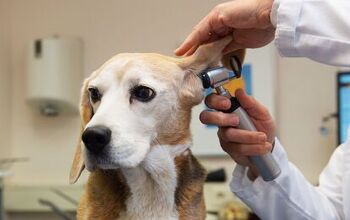How Do You Get Rid of Ear Mites in Dogs?

If you’ve ever noticed your dog shaking their head excessively or scratching at their ears like there’s no tomorrow, ear mites could be the culprit. These tiny parasites, scientifically known as Otodectes cynotis, make a home inside the ear canal, feeding on skin debris and causing intense irritation. Left untreated, ear mites can lead to infections and more serious complications - but the good news is they’re completely treatable with the right approach.
As a responsible pet owner, knowing how to spot, treat, and prevent ear mites will help you keep your furry friend happy and itch-free. Here’s what you need to know.
Spotting the Signs: Does Your Dog Have Ear Mites?
Ear mites are microscopic, meaning you won’t see them with the naked eye. But your dog will definitely let you know something’s wrong! Keep an eye out for these common symptoms:
- Frequent head shaking
- Intense itching and scratching at the ears
- Redness and inflammation
- A strong, unpleasant odor from the ears
- Scabs and sores caused by excessive scratching
- Dark, crumbly ear discharge that looks like coffee grounds
If your dog is showing any of these signs, it’s time to take action before things get worse.
Treating Ear Mites: Step by Step
#1 Clean Your Dog’s Ears
Before applying any medication, start by gently cleaning your pup’s ears to remove debris and wax buildup. Use a veterinarian-approved ear cleaner and a soft cotton ball or gauze. Avoid cotton swabs, as they can push debris deeper into the ear canal and cause injury.
#2 Apply Medication as Directed by Your Vet
Your veterinarian will likely prescribe ear drops or a topical treatment containing insecticides such as pyrethrins, selamectin, or moxidectin. Follow their instructions carefully and complete the full course of treatment, which typically lasts between 7 and 30 days.
#3 Treat All Pets in the Household
Ear mites are highly contagious and can easily spread to other pets, including cats and rabbits. Even if only one pet is showing symptoms, treating all animals in the home helps prevent reinfestation.
#4 Follow Up with Your Vet
After treatment, schedule a follow-up visit to ensure the mites are completely gone. If symptoms persist, your vet may recommend additional treatments, including oral or injectable medications such as ivermectin or milbemycin.
Preventing Ear Mites: Keep Your Pup’s Ears Healthy
The best way to deal with ear mites? Stop them before they start! Here are a few simple ways to protect your dog:
- Regular Ear Checks & Cleaning: Clean your dog’s ears weekly to remove debris and catch early signs of infection or infestation.
- Routine Vet Visits: Regular check-ups help detect ear mites and other ear issues before they become severe.
- Preventative Treatments: Some monthly flea and tick preventatives also protect against ear mites. Ask your vet about the best option for your pup.
With a little care and attention, you can keep your dog’s ears clean, comfortable, and free of pesky ear mites. If you ever suspect an infestation, don’t hesitate to seek veterinary care - your pup will thank you with a happy, wagging tail!

A proud mama to seven dogs and ten cats, Angela spends her days writing for her fellow pet parents and pampering her furballs, all of whom are rescues. When she's not gushing over her adorable cats or playing with her dogs, she can be found curled up with a good fantasy book.
More by Angela Vuckovic

























